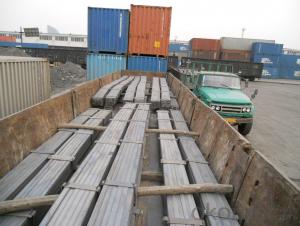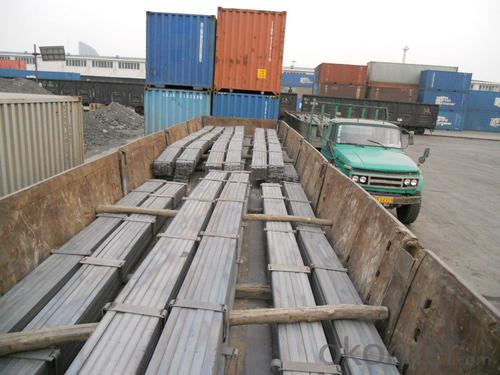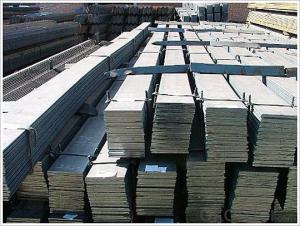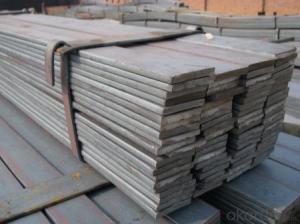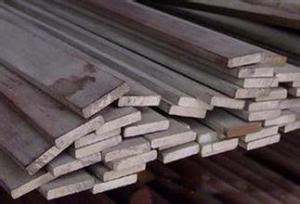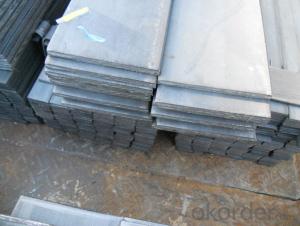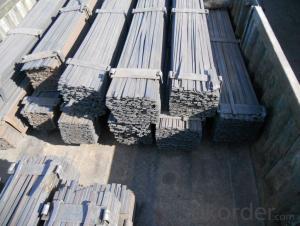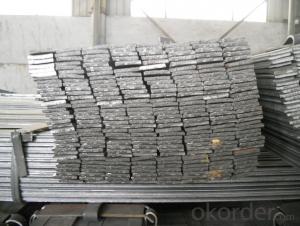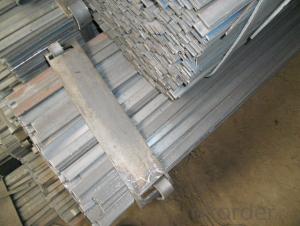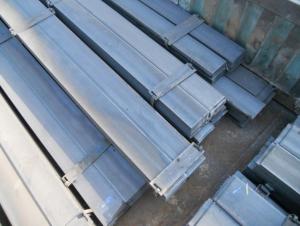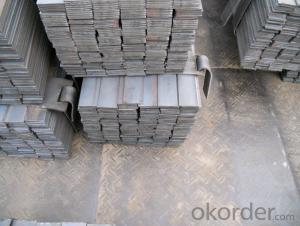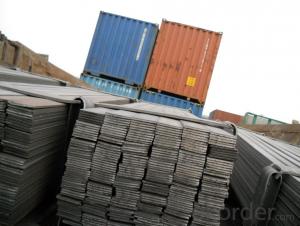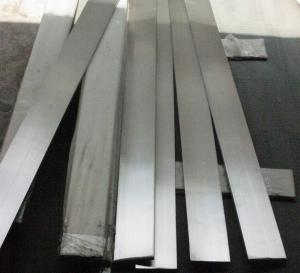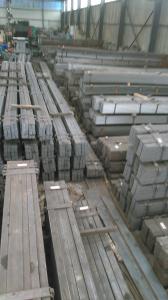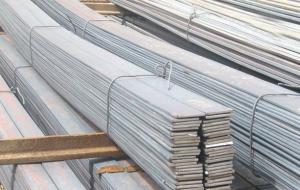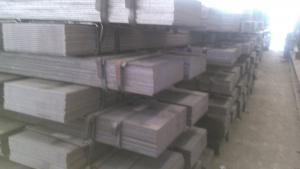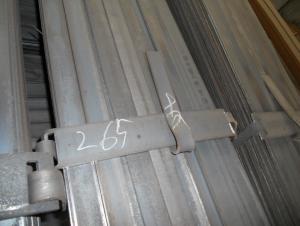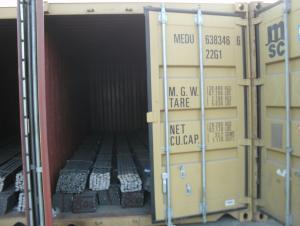GB Standard Steel Flat Bar with High Quality 25mm
- Loading Port:
- Tianjin
- Payment Terms:
- TT OR LC
- Min Order Qty:
- 25 m.t
- Supply Capability:
- 15000 m.t/month
OKorder Service Pledge
OKorder Financial Service
You Might Also Like
Product Description of GB Standard Steel Flat Bar with High Quality 25mm:
Specification of GB Standard Steel Flat Bar with High Quality 25mm:
-Standard: GB
-Material: Q235
-Length: 6m, 12m
-Size:
| Size(mm) | Mass(Kg/m) |
| 25*5 | 0.98 |
| 25*8 | 1.57 |
| 25*10 | 1.96 |
Package & Delivery of GB Standard Steel Flat Bar with High Quality 25mm:
1.The steel flat bars will be packed in bundle with steel wire at each end of every bundle and color marking in order to help the customer to recognize his goods more easily at sight.
2. And the steel flat bars could be loaded into 20ft or 40ft container, or by bulk cargo. If the weight of each bundle reaches more than 3.5 mt, the loading by break bulk cargo should be choosed. When the weight of each bundle reaches less than 3mt, the loading by container should be choosed.
3.As for the transportaion from mill to loading port, the truck will be usually used. And the maximum quantity for each truck is 40mt.
4.All in all, we could do in accordance with customer's request.
FAQ:
Q1: Why buy Materials & Equipment from OKorder.com?
A1: All products offered by OKorder.com are carefully selected from China's most reliable manufacturing enterprises. Through its ISO certifications, OKorder.com adheres to the highest standards and a commitment to supply chain safety and customer satisfaction.
Q2: How do we guarantee the quality of our products?
A2: We have established an advanced quality management system which conducts strict quality tests at every step, from raw materials to the final product. At the same time, we provide extensive follow-up service assurances as required.
Q3: How soon can we receive the product after purchase?
A3: Within three days of placing an order, we will arrange production. The shipping date is dependent upon the quatity, how many sizes you want and the plan of production, but is typically 1 month to 2 month days from the beginning of production.
Images of GB Standard Steel Flat Bar with High Quality 25mm:
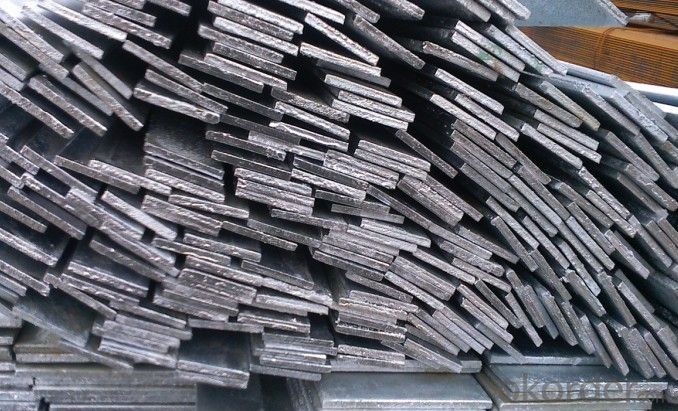
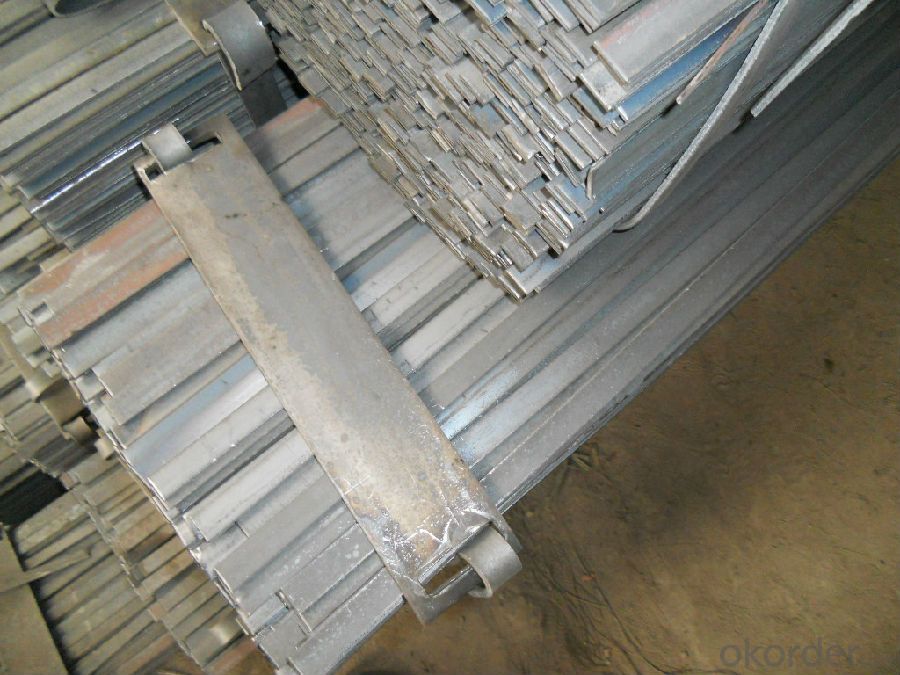
*If you would like to get our price, please inform us the size, standard/material and quantity. Thank you very much for your attention.
- Q: Are steel flat bars available in pre-cut lengths?
- Indeed, pre-cut lengths of steel flat bars can be found. Numerous suppliers provide steel flat bars in a wide range of pre-cut lengths, catering to diverse customer requirements and projects. These pre-cut lengths usually adhere to standardized measurements, spanning from a few feet to several feet. Nevertheless, the availability of particular pre-cut lengths might differ depending on the supplier and the specific type of steel flat bar needed. It is advisable to consult the supplier or manufacturer directly to inquire about their precise pre-cut length choices.
- Q: Can steel flat bars be used for making molds or dies?
- Yes, steel flat bars can be used for making molds or dies. Steel is a versatile material known for its strength and durability, making it suitable for various applications in industries such as manufacturing and engineering. When used for making molds or dies, steel flat bars offer the necessary stability and rigidity to withstand the pressures and forces involved in the molding or die-cutting process. Moreover, the flat surface of the bars ensures precise and accurate shaping, allowing for the production of high-quality molds or dies. Steel flat bars can be machined, welded, and heat-treated to achieve the desired specifications and characteristics required for specific molding or die-cutting applications.
- Q: How do you cut steel flat bars to a specific length?
- To cut steel flat bars to a specific length, you can use various tools such as a hacksaw, circular saw, or angle grinder equipped with a cutting disc suitable for metal. Measure the desired length accurately using a measuring tape or ruler, and mark the cut line on the steel bar. Secure the bar firmly in a vise or clamp to prevent any movement while cutting. Then, carefully follow the marked line and use the selected cutting tool to make a smooth and straight cut through the steel flat bar.
- Q: Can steel flat bars be machined or drilled?
- Yes, steel flat bars can be machined or drilled.
- Q: Are steel flat bars prone to corrosion?
- Yes, steel flat bars are prone to corrosion. Steel is primarily made of iron, and when exposed to moisture or certain chemicals, it can react and form iron oxide, also known as rust. This process is known as corrosion. While steel is generally more resistant to corrosion compared to other metals, such as aluminum, it is not entirely immune. Factors such as the quality of the steel, environmental conditions, and the presence of corrosive agents can all contribute to the rate at which corrosion occurs. To mitigate the risk of corrosion, steel flat bars can be treated with coatings, such as galvanization or painting, or made from corrosion-resistant alloys, such as stainless steel. Regular maintenance and proper handling can also help prevent and minimize corrosion.
- Q: What is flat steel, please?
- Flat, refers to the width 12-300mm, thickness 4-60mm, cross section is rectangular in shape and with a blunt edge of steel. Flat steel can be finished steel, or can be used as the blank of welded pipe and thin slab for laminated sheet rolling. Main application: flat steel is used as a material, used for making iron, tools and machinery parts, and used as frame structures and escalators for buildings.
- Q: Can steel flat bars be used for manufacturing storage racks or shelves?
- Steel flat bars are suitable for the manufacturing of storage racks or shelves. They are extensively utilized in the construction sector owing to their robustness and resilience. These bars offer a solid foundation for storage racks or shelves and can withstand heavy loads without any deformation or distortion. Furthermore, it is effortless to weld or bolt steel flat bars together, enabling the creation of customized storage solutions tailored to specific needs. Consequently, opting for steel flat bars is an outstanding decision when it comes to manufacturing storage racks or shelves.
- Q: Are there any differences between flat iron and flat steel?
- We should know the difference between iron and steel is carbon content of different (2%-4.3% and 0.03%-2%), and then understand the classification of iron and steel respectively, and focus on the actual use of various substances such as name, name of gray cast iron, commonly used in the manufacture of various castings etc.. This part of the study should be based on contrast, although the data theory is not many, but we should pay attention to, because the exam often in the form of common sense multiple-choice questions appear.
- Q: How do steel flat bars contribute to the durability of structures?
- Steel flat bars contribute to the durability of structures in several ways. First and foremost, steel is an incredibly strong and resilient material. It has a high tensile strength, which means it can withstand a significant amount of force or pressure without deforming or breaking. This strength is essential for structures that need to support heavy loads or withstand harsh environmental conditions. Additionally, steel flat bars have excellent corrosion resistance properties. Steel is often coated with protective materials such as zinc or paint to further enhance its resistance to corrosion. This is especially important in structures that are exposed to moisture, chemicals, or other corrosive elements. By preventing rust and corrosion, steel flat bars can ensure the longevity and structural integrity of a building or infrastructure. Moreover, steel flat bars are versatile and can be easily fabricated and shaped to meet specific design requirements. They can be welded, bent, cut, or drilled to fit various architectural or engineering needs. This adaptability allows for the creation of complex and innovative structures. Furthermore, steel flat bars have a high fire resistance. Compared to other materials, steel does not burn or contribute to the spread of fire. This makes it a preferred choice for structures where fire safety is a concern. Lastly, steel flat bars are highly sustainable and environmentally friendly. Steel is one of the most recycled materials in the world, and its recycling process requires significantly less energy compared to producing new steel. By using steel flat bars in construction, we can reduce the carbon footprint and contribute to a more sustainable future. In conclusion, steel flat bars contribute to the durability of structures by providing strength, corrosion resistance, versatility, fire resistance, and sustainability. Their properties make them an ideal choice for a wide range of construction projects, ensuring the longevity and safety of the built environment.
- Q: Are steel flat bars available in different thicknesses?
- Indeed, one can find steel flat bars of varying thicknesses. These bars are manufactured in an assortment of sizes and dimensions to cater to diverse purposes. The width of a steel flat bar can span from extremely slim, measuring 1/8 inch or 3.18 mm, to considerably broader choices like 1 inch or 25.4 mm. The assortment of thicknesses accessible grants flexibility in their utilization, be it for construction, manufacturing, or alternative industrial applications.
Send your message to us
GB Standard Steel Flat Bar with High Quality 25mm
- Loading Port:
- Tianjin
- Payment Terms:
- TT OR LC
- Min Order Qty:
- 25 m.t
- Supply Capability:
- 15000 m.t/month
OKorder Service Pledge
OKorder Financial Service
Similar products
Hot products
Hot Searches
Related keywords
